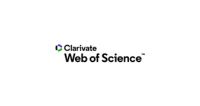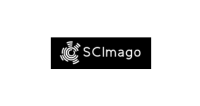PRODUÇÃO IN VITRO DE EMBRIÕES BOVINOS EM MEIO SUPLEMENTADO COM FONTES PROTÉICAS DEFINIDAS E INDEFINIDAS
DOI:
https://doi.org/10.5380/avs.v9i1.4053Palavras-chave:
soro de égua, bovino, PIV, PVA, BSA, mare serum, bovine, IVP, BSA.Resumo
Quinhentos e trinta e três (n=533) complexos cumulus-oócitos (CCO) bovinos foram utilizados para comparar a suplementação dos meios de maturação e cultivo com diferentes fontes protéicas: soro de égua em estro (SEE; n=150) e soro de vaca em estro (SVE; n=123), álcool polivinílico (PVA; n=128) e albumina sérica bovina (BSA; n=132). Os grupos de CCO foram distribuídos aletoriamente e maturados in vitro por 24h em TCM199 com 10% de SEE, 10% SVE, 0,1% PVA e 0,6% BSA em estufa de cultivo com 5% de CO2, a 39ºC e umidade saturada. A fecundação foi realizada durante 18h, em meio FERT-TALP em estufa de cultivo. Os embriões foram cultivados por 8 dias em meio synthetic oviduct fluid (SOFaaci) com 5% SEE, 5% SVE, 0,1% PVA e 0,6% BSA em estufa de cultivo a 39ºC, sendo mantidos em bolsas gaseificadas com 5% CO2, 5% O2 e 90% N2. A produção de embriões no D7 nos tratamentos SEE (33/142; 23%) e SVE (34/103; 33%) foi superior (P<0,05) a dos tratamentos PVA (6/116; 5%) e BSA (4/126; 3%). No D9, a taxa de blastocistos nos tratamentos SEE (22/142; 15%) e SVE (22/103; 21%) foram superiores (P<0,05) a do grupo BSA (3/126; 2%). A produção de blastocistos foi superior quando se adicionou soro ao meio de cultivo. Confirmou-se neste estudo que o SEE é uma alternativa para a PIV por três importantes razões: as taxas de produção embrionária obtidas, a facilidade de processamento e a redução da possibilidade de transmissão de doenças espécie-específicas.
In vitro production of bovine embryos in medium supplemented with defined and undefined protein sources
Abstract
Five hundred and thirty three (n=533) bovine cumulus-oocytes complexes (COC) obtained by aspiration of 2-8mm diameter follicles were used to compare maturation and culture media containing distinct protein sources: estrus mare serum (EMS; n=150), estrus cow serum (ECS=123), polyvinyl alcohol (PVA; n= 128) and bovine serum albumin (BSA; n=132). COC groups were randomly distributed into treatments and in vitro maturated (IVM) in TCM-199 + 10% EMS, 10% ECS, 0.1% PVA and 0.6% BSA for 24h using an incubator with 5% CO2 at 39ºC and saturated air humidity. Fertilization was accomplished during 18h in FERT-TALP medium at the same temperature and gas atmosphere of the previous maturation phase. Denudation was performed and the zygotes were cultured for 8 days in synthetic oviduct fluid (SOFaaci) medium + 5% EMS, 5% ECS, 0.1% PVA and 0.6% BSA in an incubator at 39ºC using gasified bags with 5% CO2, 5% O2 and 90% N2. Embryo production in D7 for treatments EMS (33/142; 23%) and ECS (34/103; 33%) were higher (P<0,05) than PVA (6/116; 5%) and BSA (4/126; 3%). On day 9 blastocysts development rates in EMS (22/142; 15%) and ECS (22/103; 21%) treatments were higher (P<0.05) than in BSA (3/126; 2%). Blastocyst production was higher with the addition of serum to the medium. It was confirmed that EMS is an alternative for in vitro production (IVP) for three important reasons: the embryo production rates obtained, the easiness of the process and the reduction of the possibility of specific species disease transmission.
Downloads
Como Citar
Edição
Seção
Licença
Autores que publicam nesta revista concordam com os seguintes termos:
- Autores mantém os direitos autorais e concedem à revista o direito de primeira publicação, com o trabalho simultaneamente licenciado sob a Creative Commons - Atribuição 4.0 Internacional que permite o compartilhamento do trabalho com reconhecimento da autoria e publicação inicial nesta revista.
- Autores têm autorização para assumir contratos adicionais separadamente, para distribuição não-exclusiva da versão do trabalho publicada nesta revista (ex.: publicar em repositório institucional ou como capítulo de livro), com reconhecimento de autoria e publicação inicial nesta revista.
- Autores têm permissão e são estimulados a publicar e distribuir seu trabalho online (ex.: em repositórios institucionais ou na sua página pessoal) a qualquer ponto antes ou durante o processo editorial, já que isso pode gerar alterações produtivas, bem como aumentar o impacto e a citação do trabalho publicado.













